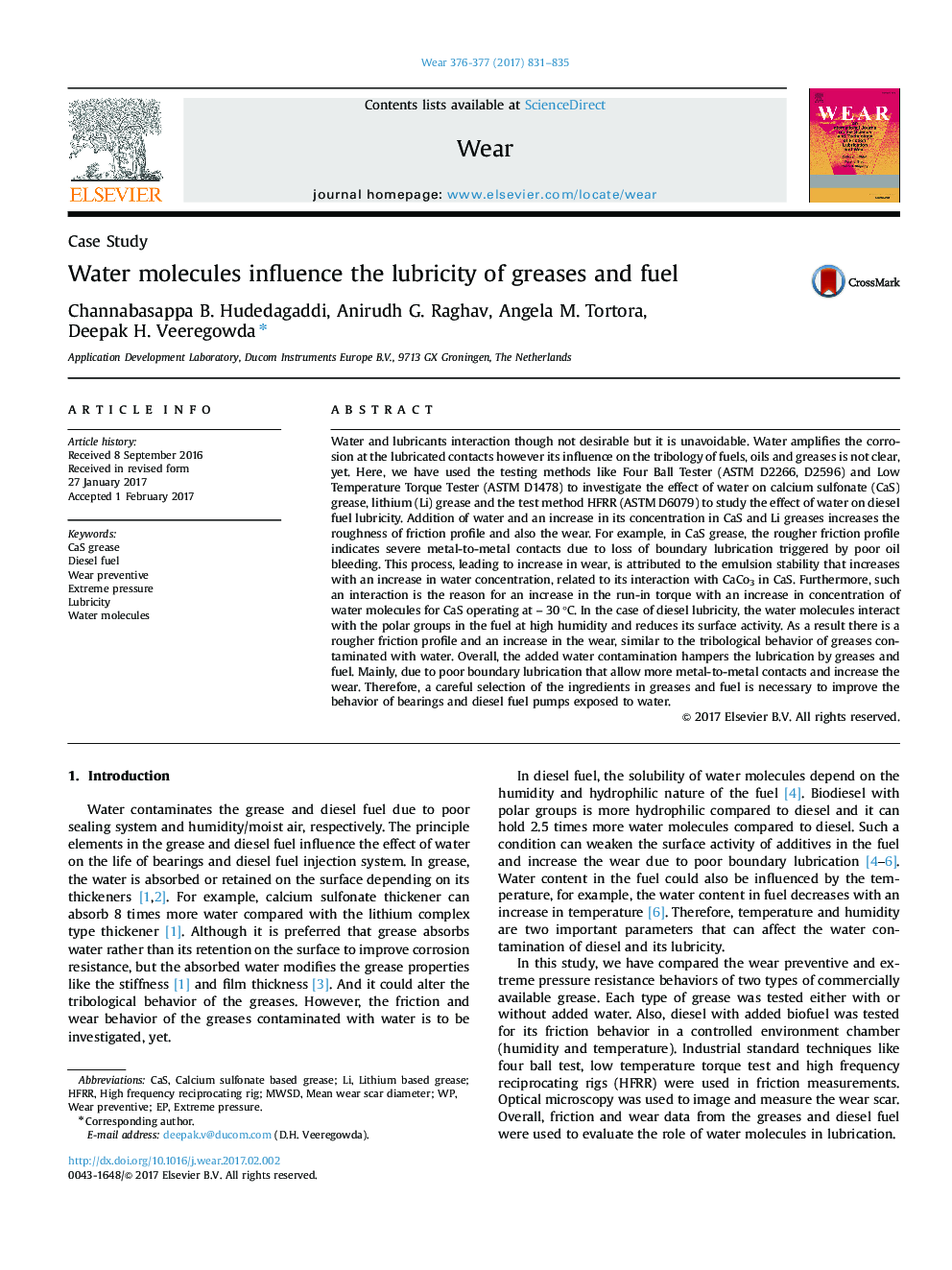| Article ID | Journal | Published Year | Pages | File Type |
|---|---|---|---|---|
| 4986753 | Wear | 2017 | 5 Pages |
Abstract
Water and lubricants interaction though not desirable but it is unavoidable. Water amplifies the corrosion at the lubricated contacts however its influence on the tribology of fuels, oils and greases is not clear, yet. Here, we have used the testing methods like Four Ball Tester (ASTM D2266, D2596) and Low Temperature Torque Tester (ASTM D1478) to investigate the effect of water on calcium sulfonate (CaS) grease, lithium (Li) grease and the test method HFRR (ASTM D6079) to study the effect of water on diesel fuel lubricity. Addition of water and an increase in its concentration in CaS and Li greases increases the roughness of friction profile and also the wear. For example, in CaS grease, the rougher friction profile indicates severe metal-to-metal contacts due to loss of boundary lubrication triggered by poor oil bleeding. This process, leading to increase in wear, is attributed to the emulsion stability that increases with an increase in water concentration, related to its interaction with CaCo3 in CaS. Furthermore, such an interaction is the reason for an increase in the run-in torque with an increase in concentration of water molecules for CaS operating at - 30 °C. In the case of diesel lubricity, the water molecules interact with the polar groups in the fuel at high humidity and reduces its surface activity. As a result there is a rougher friction profile and an increase in the wear, similar to the tribological behavior of greases contaminated with water. Overall, the added water contamination hampers the lubrication by greases and fuel. Mainly, due to poor boundary lubrication that allow more metal-to-metal contacts and increase the wear. Therefore, a careful selection of the ingredients in greases and fuel is necessary to improve the behavior of bearings and diesel fuel pumps exposed to water.
Related Topics
Physical Sciences and Engineering
Chemical Engineering
Colloid and Surface Chemistry
Authors
Channabasappa B. Hudedagaddi, Anirudh G. Raghav, Angela M. Tortora, Deepak H. Veeregowda,
